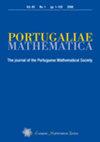Three-dimensional registration and shape reconstruction from depth data without matching: A PDE approach
IF 0.8
4区 数学
Q3 MATHEMATICS
引用次数: 0
Abstract
The widespread availability of depth sensors like the Kinect camera makes it easy to gather three-dimensional (3D) data. However, accurately and efficiently merging large datasets collected from different views is still a core problem in computer vision. This question is particularly challenging if the relative positions of the views are not known, if there are few or no overlapping points, or if there are multiple objects. Here, we develop a method to reconstruct the 3D shapes of objects from depth data taken from different views whose relative positions are not known. Our method does not assume that common points in the views exist nor that the number of objects is known a priori. To reconstruct the shapes, we use partial differential equations (PDE) to compute upper and lower bounds for distance functions, which are solutions of the Eikonal equation constrained by the depth data. To combine various views, we minimize a function that measures the compatibility of relative positions. As we illustrate in several examples, we can reconstruct complex objects, even in the case where multiple views do not overlap, and, therefore, do not have points in common. We present several simulations to illustrate our method including multiple objects, non-convex objects, and complex shapes. Moreover, we present an application of our PDE approach to object classification from depth data. D. Gomes was partially supported by baseline and start-up funds, from King Abdullah University of Science and Technology (KAUST). J. Saúde was partially supported by by the Portuguese Foundation for Science and Technology through the Carnegie Mellon Portugal Program under the Grant SFRH/BD/52162/2013.无匹配深度数据的三维配准和形状重建:一种PDE方法
Kinect相机等深度传感器的广泛可用性使收集三维(3D)数据变得容易。然而,准确有效地合并从不同视图收集的大型数据集仍然是计算机视觉的核心问题。如果视图的相对位置未知,如果重叠点很少或没有重叠点,或者有多个对象,那么这个问题尤其具有挑战性。在这里,我们开发了一种方法,从相对位置未知的不同视图中获取的深度数据中重建物体的3D形状。我们的方法不假设视图中存在公共点,也不假设对象的数量是先验已知的。为了重建形状,我们使用偏微分方程(PDE)来计算距离函数的上界和下界,距离函数是受深度数据约束的Eikonal方程的解。为了结合各种观点,我们最小化了一个测量相对位置兼容性的函数。正如我们在几个例子中所说明的,我们可以重建复杂的对象,即使在多个视图不重叠的情况下,因此也没有共同点。我们给出了几个模拟来说明我们的方法,包括多个对象、非凸对象和复杂形状。此外,我们还介绍了我们的PDE方法在深度数据对象分类中的应用。D.戈梅斯的部分资金来自阿卜杜拉国王科技大学的基线和启动资金。J.Saúde通过卡内基梅隆葡萄牙项目获得了葡萄牙科学技术基金会的部分支持,该项目的拨款为SFRH/BD/52162/2013。
本文章由计算机程序翻译,如有差异,请以英文原文为准。
求助全文
约1分钟内获得全文
求助全文
来源期刊

Portugaliae Mathematica
MATHEMATICS, APPLIED-MATHEMATICS
CiteScore
0.90
自引率
12.50%
发文量
23
审稿时长
>12 weeks
期刊介绍:
Since its foundation in 1937, Portugaliae Mathematica has aimed at publishing high-level research articles in all branches of mathematics. With great efforts by its founders, the journal was able to publish articles by some of the best mathematicians of the time. In 2001 a New Series of Portugaliae Mathematica was started, reaffirming the purpose of maintaining a high-level research journal in mathematics with a wide range scope.
 求助内容:
求助内容: 应助结果提醒方式:
应助结果提醒方式:


